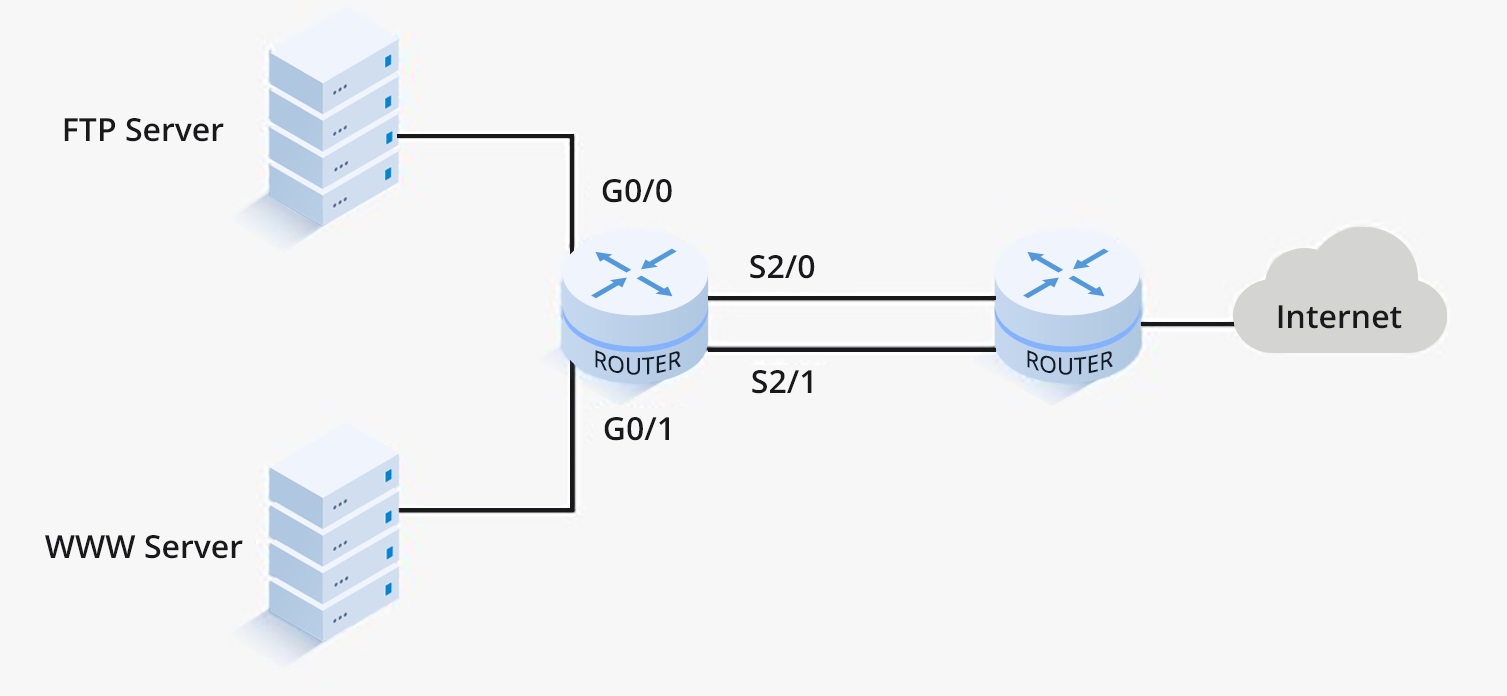Understanding the Mechanics of PBR
PBR operates through a set of match conditions and actions that help identify and process data packets. These match conditions might include criteria such as source and destination addresses, protocol types, or port numbers, while the corresponding actions determine packet processing strategies, such as specific forwarding paths or traffic prioritization. For example, PBR could route HTTP traffic along one designated path and send other types of traffic along another. This high level of control allows network administrators to direct traffic in a finely tuned manner, ultimately improving network efficiency and performance.
PBR vs. Traditional Routing: A Key Difference
Traditional IP routing relies on shortest-path algorithms or routing tables, typically forwarding packets based on a network’s inherent topology or protocols like OSPF or BGP. This approach efficiently routes packets from source to destination, but it lacks flexibility in how it handles different types of traffic.
PBR, on the other hand, empowers administrators to set specific policies for how data is routed. Unlike conventional routing, which treats all traffic equally, PBR enables priority routing for mission-critical applications, such as video conferencing, over high-bandwidth, low-latency links. Less essential traffic can be directed along other paths. This nuanced approach enhances both network performance and resource allocation.
Benefits of PBR for Modern Networks
Load Balancing and Traffic Optimization
One of the standout advantages of PBR is its ability to balance traffic across multiple paths, helping to avoid congestion and optimize network efficiency. By distributing data across various routes, PBR prevents overloading any single link, resulting in better throughput and overall network performance. This capability ensures that available network resources are used to their fullest potential, enhancing both speed and availability.
Security and Regulatory Compliance
With PBR, organizations can create detailed rules based on packet attributes like IP addresses, destination addresses, and protocols. This enables blocking of untrusted or suspicious traffic, adding a layer of security to network operations. Administrators can also route sensitive traffic—such as financial transactions—through highly secure paths, thereby enhancing compliance with regulatory requirements and safeguarding sensitive data.
Quality of Service (QoS) Control
PBR also enhances Quality of Service (QoS) management by routing traffic according to the unique demands of various applications. Network administrators can allocate bandwidth and priority based on specific service needs, ensuring that real-time applications like video and voice communications are protected from congestion. This approach minimizes delays and improves the user experience for critical business applications.
High-Performance CDN Integration
A Content Delivery Network (CDN) powered by PBR offers enhanced content distribution by optimizing traffic across distributed data centers. This approach reduces the burden on central servers, leading to quicker load times, reduced user bounce rates, and an overall improved experience. PBR optimizes link utilization within the CDN, reducing data transfer costs while maintaining quality.
PBR as a Tool for Cost Efficiency and Stability
Through PBR, businesses can select the best links based on specific traffic demands, thereby optimizing quality while minimizing transmission costs. Additional benefits of PBR include:
- Failover Protection: PBR can reroute traffic through alternative paths if a primary link fails, ensuring seamless continuity.
- Enhanced Security Segmentation: Policies can direct sensitive data traffic along isolated paths, bolstering network security.
- Multi-ISP Optimization: In environments with multiple ISPs, PBR selects the best-performing routes, ensuring efficient connectivity.

Advanced Management with PicOS® and AmpCon™
PicOS® switches, coupled with the AmpCon™ management platform, bring unified network management, offering centralized configuration, monitoring, and maintenance. These tools streamline network operations by reducing downtime and manual tasks, enhancing overall management efficiency.
- PicOS® Switches: These are Broadcom chip-powered switches that support EVPN-VXLAN and MLAG technology, providing high scalability and reliability.
- AmpCon™ Management Platform: It enables zero-touch provisioning, centralized updates, intelligent backups, and compliance management, simplifying network expansion and minimizing manual intervention.
Ensuring Reliable Data Transmission with PFC and ECN
The CDN solution benefits from Priority Flow Control (PFC) and Explicit Congestion Notification (ECN) technologies for reliable data transmission.
- PFC Traffic Control: PFC enables independent management of priority queues, allowing pauses and restarts that don’t impact other queues, leading to efficient link sharing.
- ECN Congestion Control: ECN provides immediate congestion feedback, ensuring equitable resource use, reducing retransmissions, and improving network performance.
Conclusion
Through smart load balancing, enhanced security, and QoS management, PBR offers a powerful approach to maximizing network resources and reducing costs. In CDN solutions, PBR further boosts network efficiency and resilience, allowing businesses to offer fast, secure access to users. As a result, PBR is helping organizations streamline their networks and advance their digital transformation efforts.



 Fiber Optic Termination Boxes
Fiber Optic Termination Boxes Fiber Optic Splice Enclosures
Fiber Optic Splice Enclosures Fiber Patch Panels
Fiber Patch Panels PLC Splitters
PLC Splitters Fiber Optic Pigtails
Fiber Optic Pigtails OTDR Launch Cables
OTDR Launch Cables Fiber Optic Adapters
Fiber Optic Adapters Fiber Optic Patch Cords
Fiber Optic Patch Cords